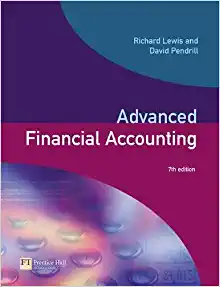Question
A completed takeover is hostile if the management of the target firm is against being bought by the acquirer. True False Many horizontal mergers are
A completed takeover is hostile if the management of the target firm is against being bought by the acquirer.
True
False
Many horizontal mergers are made in an attempt to gain market share.
True
False
Consideration is exchanged after the signing of the definitive merger agreement by both parties.
True
False
Anti-trust legislation keeps firms from merging to create monopoly power. However, if a firm grows organically to attain monopoly power, it cannot be broken apart.
True
False
As long as it can be documented that the target was the firm responsible for pollution at a site, the buyer cannot be held responsible for its cleanup.
True
False
Interest expense should be included in the calculations for free cash flow, since interest payments are tax deductible.
True
False
When using WACC, the value of the interest tax shield is accounted for by using the firms before-tax cost of debt.
True
False
Enterprise value is calculated as the market value of net debt plus the book value of common equity.
True
False
Since the ownership structure of the spun-off company and the parent company is the same, shareholder approval is not required for a spin-off.
True
False
A tender offer is when an acquisition offer is made directly to the target firms shareholders, bypassing the targets management.
True
False
Give one real-world example (real or hypothetical deals, but using actual companies) each of a horizontal merger and a conglomerate merger. Explain why each example fits the definition of a horizontal or conglomerate merger.
Explain what is meant by the term synergy in the context of mergers & acquisitions. Describe three potential sources of synergy in the context of a vertical merger.
Briefly explain why depreciation cant exceed capital expenditures in a perpetuity calculation.
There is an industry with 5 firms. There is one large firm with 80% market share, three medium-sized firms with 6% market share, and one small firm with 2% market share. Calculate the Herfindahl-Hirschman Index (HHI) for this industry. Please show your work.
Is this industry either highly concentrated, moderately concentrated, or not concentrated?
There is an industry with 5 firms. There is one large firm with 80% market share, three medium-sized firms with 6% market share, and one small firm with 2% market share. Say the large firm merged with the small firm. By how much would this increase the industry's HHI? Please show your work.
According to the guidelines presented in class, should the FTC either approve the merger, investigate the merger further, or challenge the merger?
Question
You need to estimate the equity beta for Golden Clothiers, Inc. Golden's debt-to-equity ratio is 85%, and its debt beta is 0.25. The following table shows the betas, debt betas and debt-to-equity ratios for three comparable clothing retailers (all taken from finance.yahoo.com). Assume the tax rate is 30% for all four firms. Please show your work and clearly label your answers.
CompanyBetaD/E RatioDebt BetaTJ Maxx1.680.250.3New York & Co2.140.160.3Express, Inc1.230.280.3Assuming debt is risk-free, use the information given above to estimate the unlevered equity betas of each of these companies.
Assuming debt is risk-free, what is your estimate of Golden Clothiers levered equity beta?
The current risk-free rate is 1.8% and the current return on the market is 9.3%. If Golden's before-tax cost of debt is 5.42% and it has no preferred stock in its capital structure, what is Golden's weighted average cost of capital?
Step by Step Solution
There are 3 Steps involved in it
Step: 1

Get Instant Access to Expert-Tailored Solutions
See step-by-step solutions with expert insights and AI powered tools for academic success
Step: 2

Step: 3

Ace Your Homework with AI
Get the answers you need in no time with our AI-driven, step-by-step assistance
Get Started


